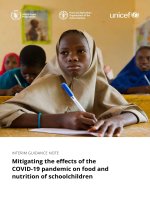On food and cooking the science and lore of the kitchen ( PDFDrive ) 706
Bạn đang xem bản rút gọn của tài liệu. Xem và tải ngay bản đầy đủ của tài liệu tại đây (111.93 KB, 2 trang )
20 species range across the northern
hemisphere. The plants are easy to grow and
therefore are grown widely, from sub-arctic
FinlandtotropicalEcuador.Thestrawberryis
unusual in bearing its “seeds” on the surface
of the fleshy portion, not inside. The “seeds”
are actually miniature dry fruits (achenes),
similar to buckwheat and sunflower “seeds,”
andthefleshyportionistheflower’sswollen
base,notitsovary.Duringripening,thecells
of the strawberry interior enlarge and pull
apart from each other. The berry is therefore
filled with tiny air pockets, and its shape is
maintainedbythepressureofthecellcontents
pushing each cell onto its neighbors. When
this pressure is released, by water loss from
dryingoutorfromfreezingthatpuncturesthe
cellwalls,thestructureweakensandthefruit
becomes soft and mushy. Strawberries don’t
improveoncepicked,sotheymustbepicked
ripe. Thanks to their thin skin and fragile
structure, they only last a few days, even in
coldstorage.
Thepineapplenoteinstandard
strawberriescomesfromthepresenceofethyl
esters.Somesulfurcompoundsandacomplex
caramel-likeoxygen-containingring,furaneol
(alsocharacteristicofpineapple),roundout
strawberryaroma.ThesmallerEuropean
woodlandstrawberrieshaveaflavorof
Concordgrapesthankstoanthranilates,anda
clove-likespicynote(fromthephenolic
eugenol).Strawberriesarerichinascorbic
acidandinphenolicantioxidants,including
itsredanthocyaninpigments.Theyarepoorin
pecticmaterials,sostrawberrypreservesare
oftensupplementedwithpreparedpectinor
pectin-richfruits.
TheDomesticationoftheStrawberryMostof
thestrawberriesgrowntodayderivefromtwo
American species which were brought
together and hybridized less than 300 years
ago—andinEurope,notintheAmericas!









